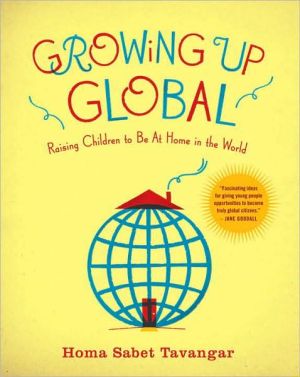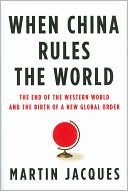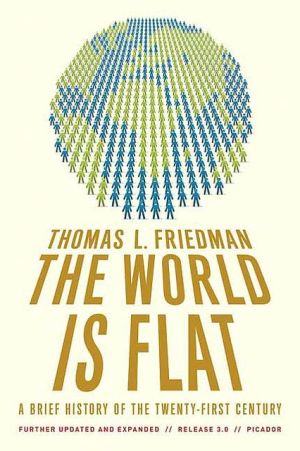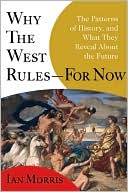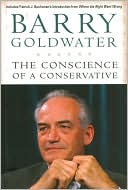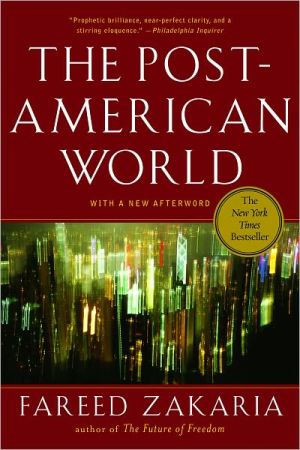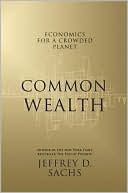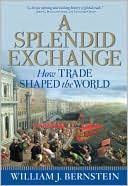Growing Up Global: Raising Children to Be At Home in the World
In today’s increasingly interconnected world, how do we prepare our children to succeed and to become happy, informed global citizens? A mother of three, Homa Sabet Tavangar has spent her career helping governments develop globally oriented programs and advising businesses on how to thrive abroad. In Growing Up Global, Tavangar shares with all of us her “parenting toolbox” to help give our children a vital global perspective.\ Whether you’re mastering a greeting in ten different languages,...
Search in google:
In today’s increasingly interconnected world, how do we prepare our children to succeed and to become happy, informed global citizens? A mother of three, Homa Sabet Tavangar has spent her career helping governments develop globally oriented programs and advising businesses on how to thrive abroad. In Growing Up Global, Tavangar shares with all of us her “parenting toolbox” to help give our children a vital global perspective. Whether you’re mastering a greeting in ten different languages, throwing an internationally themed birthday party, or celebrating a newfound holiday, Growing Up Global provides parents and children with a rich, exciting background for exploring and connecting with far-flung nations they may have only heard about on television. Inside you’ll discover• fun activities, games, and suggestions for movies, music, books, magazines, service activities, and websites for expanding your family’s worldview • simple explanations that will help your children grasp the diversity of world faiths• creative ways to gain geography literacy• handy lists of celebrations and customs that offer a fascinating look at how people from different cultures around the world live everyday lifeGrowing Up Global is a book that parents, grandparents, and teachers can turn to again and again for inspiration and motivation as they strive to open the minds of children everywhere.
Introduction\ Make Yourself at Home . . . in the World\ Why I Wrote This Book and\ Why You Need to Read It\ My family and I spent the first three months of 2007 living in West Africa. As our days in The Gambia passed like a blur and the pace of our busy North American schedules acquiesced to life in a foreign land, it seemed that the reason for our long journey changed almost every day: to experience life in a different culture and environment during my eldest daughter's last year before high school; for the kids to attend an international school-so different from their homogenous, well-equipped American public school; to spend meaningful time with their cousins who have been raised in Africa; to be engaged in service where it was desperately needed; to get back in touch with my own heritage of pioneers and travelers to exotic lands; and so that I could write. Ultimately, though, I think it boiled down, for me, to a challenge I set up in my mind: It was to see “could we really do it; and what would it do to us?” A motivating principle in my life has revolved around belief in humanity's oneness. By exposing my children to such a different human experience, I was putting that belief to the test.\ The unusual trip required a good deal of preparation and sacrifice-not the least of which was from my husband, who stayed home to work, visited us for one week, and returned at the height of winter to a quiet house. Once we got the idea into our heads that we could make adjustments in our lives to realize this dream, there seemed to be no reason important enough to prevent the trip. This was a precious window in our lives where we could take a sabbatical from our routine and be welcomed to experience firsthand a little-known corner of the world. The entire financial expenditure still amounted to less than a single year of private school tuition, I adjusted my work schedule, and the ordeal of putting my daughters through numerous vaccinations just made them stronger. After our public school administrators gave their support and our calendars were cleared for three months, the biggest challenge was what gifts to buy-mostly for people we had yet to meet-that would be both useful and fit within the strict forty-pound per person luggage limit.\ Three things shaped my experience the most during our stay in The Gambia: volunteering in a local public school, where only about twenty percent of the sixth-graders were functionally literate; seeing what life in a relatively peaceful African country was like through the lens of my children; and condensing our experiences into a daily blog I wrote for the Philadelphia Inquirer.\ As I helped my twelve-year-old daughter make sense of African children in frayed, American cast-off T-shirts approaching her shouting “Two-bob, two-bob” (white person, white person) to her face and then saying “Sponsor me” (for school fees or other expenses), while mansions stood nearby behind fortified gates and European tourists ambled the streets in a Muslim country wearing nothing but a bikini, I realized that our experience of traveling from suburban American life to a tiny African country could help inform other families about raising their children to become global citizens, too. So many people wanted us to share our experience with them. They didn't think they'd be going farther away than Disney World, but they did want to know what impact I'd seen on my kids and then share some of our stories with their own children. And, of course, we're not the only family with helpful experiences. There are millions out there from whom I-and my friends- would like to learn. Global social, political, and economic forces are crashing in around us and parents in my generation are grasping at straws to find ways to prepare our children for this unknown new world they will need to navigate.\ If I ever doubted that it is possible for insulated American kids to feel “at home in the world,” the reactions of my three children-who have lived in the same American suburb their entire lives-to their new environment, and particularly, the relationships with their new African friends, gave me hope. One of the highlights from our experience was how well my youngest daughter, just three-and-ahalf at the time, adapted to her completely new environment. In her Gambian class, Sophia was the only light-skinned child (and she's the “darkest” one at her U.S. school). I talked with her about going to a new classroom, with new friends and teachers, but I didn't mention anything about how different she would be from her peers, trying to preserve her as a “blank slate.” That first day, she sat still on my lap for thirty to forty minutes, intently watching the activity in the classroom. Then, when she became more comfortable, she walked over to the activity tables and explored. The next day-and each day after-the children hugged her when she walked in and made “birthday cakes” with bougainvillea and hibiscus flowers they picked for one another. I've never seen a more loving classroom environment, anywhere.\ When we returned home, everyone who knew Sophia commented on how much she had changed. She was so comfortable going back to school, more ready to make friends, able to express more complex thoughts, and didn't display the same attachment anxiety to Mommy. The eagerness and openness with which her African friends welcomed Sophia affected her profoundly. Among these sweet children, differences of race and nationality became only points of interest when fixing one another's different textured hair. Circles of friendship were malleable and open. We were quickly invited into her friends' homes, where we ate foods that were novel to us, and the girls danced and played games or dress-ups in ways Sophia and I had never seen. By the end of our stay, she could switch in and out of speaking with a Gambian accent, became a fan of “football” (soccer), gained a new concept of physical beauty (preferring dark to fair complexions), and was undisturbed by going to a school without electricity. As she told her friends back at her American school, “It's okay, we had lots of sunshine.”\ The innocence of Sophia's age group demonstrates the impact that openness to new experiences can have. She had the fewest preconceived notions and thus took in the most. We already see the results: Her experience with these authentic friendships shaped her character in ways we are still uncovering. My other two daughters, ages twelve and fourteen at the time, also consider the friends they made from their international school, natives of The Gambia as well as Sierra Leone, Nigeria, Germany, and Lebanon-countries of which they had little or no prior knowledge, as the highlight of their “African experience.”\ THE OTHER SIDE OF THE STORY\ The influence on my children of their direct exposure to such a different and loving cultural experience demonstrates how powerful feeling “at home in the world” can be for our children. That's the proactive reason to read this book: Simply put, positive experiences with the world's cultures enhance our lives.\ I believe there is another very important, though less idealistic reason to read this book and put it to use. We live in a rapidly changing world, where we know that globalization shapes our daily lives and is a major determinant to one's financial and career success. At the same time, our borders seem more closed than they have ever been. The fears of terrorism, job outsourcing, and immigrants-legal or otherwise-along with less cultural and racial diversity in most American schools colors public policy and our exposure to the world.\ This open-world, closed-world dichotomy became very clear to me when I spent the first anniversary of the September 11 terrorist attacks in Beijing, China. I was in an early morning business meeting with the executive team of the 2008 Olympic Games when I suddenly remembered that the date was 9/11/02. Back home in the United States, fear of another terrorist attack seemed to permeate all media and every conversation. But in bustling Beijing, the anniversary was barely acknowledged. The buzz in the air that day had more to do with moon cakes for the harvest festival and sealing the next deal in a booming economy.\ More impressive than the deal-making and the ultramodern buildings going up at every corner were the children I met. On command, in city after city, they showed off their skills in martial arts, languages, and mathematics (granted, some of these were staged for the visitors, but other encounters were spontaneous and informal). Socially, they were charming and adept. These children had a destiny with the global economy-and they knew it. These three phenomena-witnessing this new global economic power, the focus with which children were educated and trained, and spending the first anniversary of the September 11 attacks away from home-showed me up close how much Americans need to learn about the rest of the world. Not everyone thinks like we do. Shifting economic, social, political, and even spiritual and psychological forces are colliding with our perceived status quo-whether we recognize them or not.\ These issues took on a whole new light when I returned home from this first international business trip since having children, to discover I was pregnant with our third child. Once again, I needed to rearrange my life, and with images of 9/11 and of China's formidable economic engine fresh in my mind, I began to revisit my deepest parental concerns: How could we protect and care for this innocent life in a frenetic, confused, corrupt, angry, and at times, hostile world? I wondered how can we help our children feel at home in the world and give them the skills to think about complex issues on their own? Families can't simply isolate themselves and hope for the best. I had spent my career helping smart businesspeople make sense of global markets, and overcome their own deep-seated fears of the unknown foreign competition, but trying to navigate these issues for and with my kids perplexed me. It struck me that parents needed tools to help their children navigate the changing world, as much as businesspeople did. I wanted to move away from the defensive motivation that seemed to color our American perspective, with its yellow-orange-red Homeland Security alerts. Global competition or “flattening” should not become the next generation's “Red Scare.”\ I believe that gaining confidence and faith dissipates fear and anxiety. If my kids can relate to the world through a lens of hope and love and eagerness, then those children I met in China can be friends and helpmates, instead of enemies and competitors, and an African child can be so much more than someone you pity. If our children learn some stories, songs, or games of Arab children, perhaps the TV images of Palestinians or Iraqis would not seem as menacing and puzzling to them as they do to my contemporaries, today's generation of parents. Common sense, as well as empirical evidence, demonstrates that international consciousness in children leads to adults who can function more effectively in a global environment.\ The election of Barack Obama, who declared to a crowd of hundreds of thousands of Berliners waving American flags, “I speak to you not as a candidate for President, but as a citizen-a proud citizen of the United States, and a fellow citizen of the world,” attests to this new reality. He grew up traversing the gaps between multiple cultural milieus as did many of his advisors. We still have a long way to go. The end of a book review of Putin's Russia in the Philadelphia Inquirer, my local newspaper, summed up simply how we're doing:\ But as we wonder why the Iraqis react this way, and the French that way, and the Russians help the Iranians, and the Germans blithely lecture the United States on moral points only decades after incinerating millions, a common explanation coalesces. We don't know enough about other countries. We don't follow the rest of the world enough. Our newspapers and TV stations don't tell us enough. And we don't care enough.1\ TAKING ACTION\ The purpose of this book, then, is to offer practical steps for parents to incorporate the concept of international awareness and world citizenship as one of their family values. This book will attempt to provide perspective and solutions and to remove the trepidation about being at “one” with peoples of different cultures and beliefs. This is not about creating one amalgam of the world's cultures. Embracing the consciousness of world citizenship implies a more complex process of knowing one's self while appreciating others.\ Treating world citizenship as a family value can help avoid the crisis mentality parents experienced after 9/11, when, on top of our own fears and insecurities, we suddenly needed to talk to our kids about the world. As with other difficult topics (like sexuality), one talk is not enough. Instead, we initiate a lifelong process of forming our deepest value systems: Parents offer guidance and a foundation; kids apply this knowledge along the way and incorporate it into their own actions and worldview. If the issues are ignored until a crisis comes along, then the moral compass likely will be confused. If the issues are addressed openly, today's children- tomorrow's leaders-will acquire a sense of confidence in approaching the difficult, often uncomfortable questions facing the world.\ My aim is to encourage a proactive mindset, so that a family is not only reacting to world events that force the discussion-9/11, the Asian tsunami, war in Iraq, an interconnected global financial meltdown; the list keeps growing-but can connect genuinely with the people, circumstances, and challenges facing other human beings.\ My own upbringing was like a laboratory for these ideas. My mother's family comes from a long line of Orthodox Jews and my mother was educated in Catholic schools. My father descends from devout Muslims. Both sets of my grandparents embraced the Baha'i Faith, which teaches the idea that there is one God, that all religions share a common spiritual foundation and that humanity is one. As a result of this choice, almost all of my relatives were both pushed and pulled out of their native land, Iran, in waves of emigration, from the 1940s through the 1990s. This resulted in our having family scattered to all corners of the earth. I have cousins that are Japanese, Malawian, and Austrian-a world family- so I have always considered myself connected with different people on the planet.\ Not all families will have a direct link to disparate places and cultures in the world, or can get their kids on a plane to learn about other places and peoples firsthand, but you can expose them to the myriad cultures around the world, starting with the resources in your own communities. As you open your minds and your lives to other ways of doing things, you'll probably get to know yourselves and where you came from better; and possibly deepen the bonds within your own families along the way. Raising children to have a global mind-set could be the biggest step you and your family take toward building a more peaceful world-and it all starts at home.\ GETTING FROM HERE TO THERE\ This book is organized around the metaphor of making a new friend. The various chapters walk the reader through the elements of a lasting, fun, and interesting friendship. When I envision a “world citizen,” I think of someone who has the capacity to be a friend to all. You don't have to start by trying to master all the world cultures-which is overwhelming for anyone. Instead, think of the process on the level of building individual friendships, learning about each other one step at a time, and having fun along the way.\ Psychologists link friendship to an individual's health and ultimately, to one's survival.2 While friendly interactions among children can spur learning, when your kids make a friend, the relationship is probably mostly fun and games. As parents, ideally, you get to know the families of your children's friends, and sometimes you need to supervise play. Extending the analogy, in each chapter I include fun, hands-on activities to do with children, along with some background for the parents, and information for further learning. To gauge the range of your knowledge on the subject or culture, in the first chapter I have developed an International Quiz, to test your other IQ. This gets you to ask yourself questions about your own experiences, assumptions, and patterns of behavior, which ultimately influence your children's worldview and formative experiences. I broke down the stages of forming a friendship in the following steps, which comprise subsequent chapters.\ The first step is embracing the mind-set to make a friend and be a good friend. This calls for certain universal qualities, like empathy and respect, as embodied by the Golden Rule, which permeates all cultures and faith traditions. Subsequent chapters are more action-oriented and include lists of resources available for trying out with your family. Each chapter corresponds to things you would do with your friend, like greet them, play, go to school together, eat a meal, share a worship service, go to the movies, celebrate a birthday, and work on sustaining your friendship through service activities. Breaking down the elements of what makes diverse cultures similar as well as unique makes them easier to relate to, one of the goals of “growing up global.” There is no need to attempt all the ideas contained in each chapter. Just start with two or three that appeal to you or your family members and have fun. Refer back to specific sections when you want to. Each chapter can stand alone as a reference for its particular topic.\ If we remember that growing up with a global perspective is really a lifelong process and not one final destination-you don't just arrive-qualities of humility, curiosity, and compassion will be nurtured. These are the virtues of a true friend, and a world citizen.
